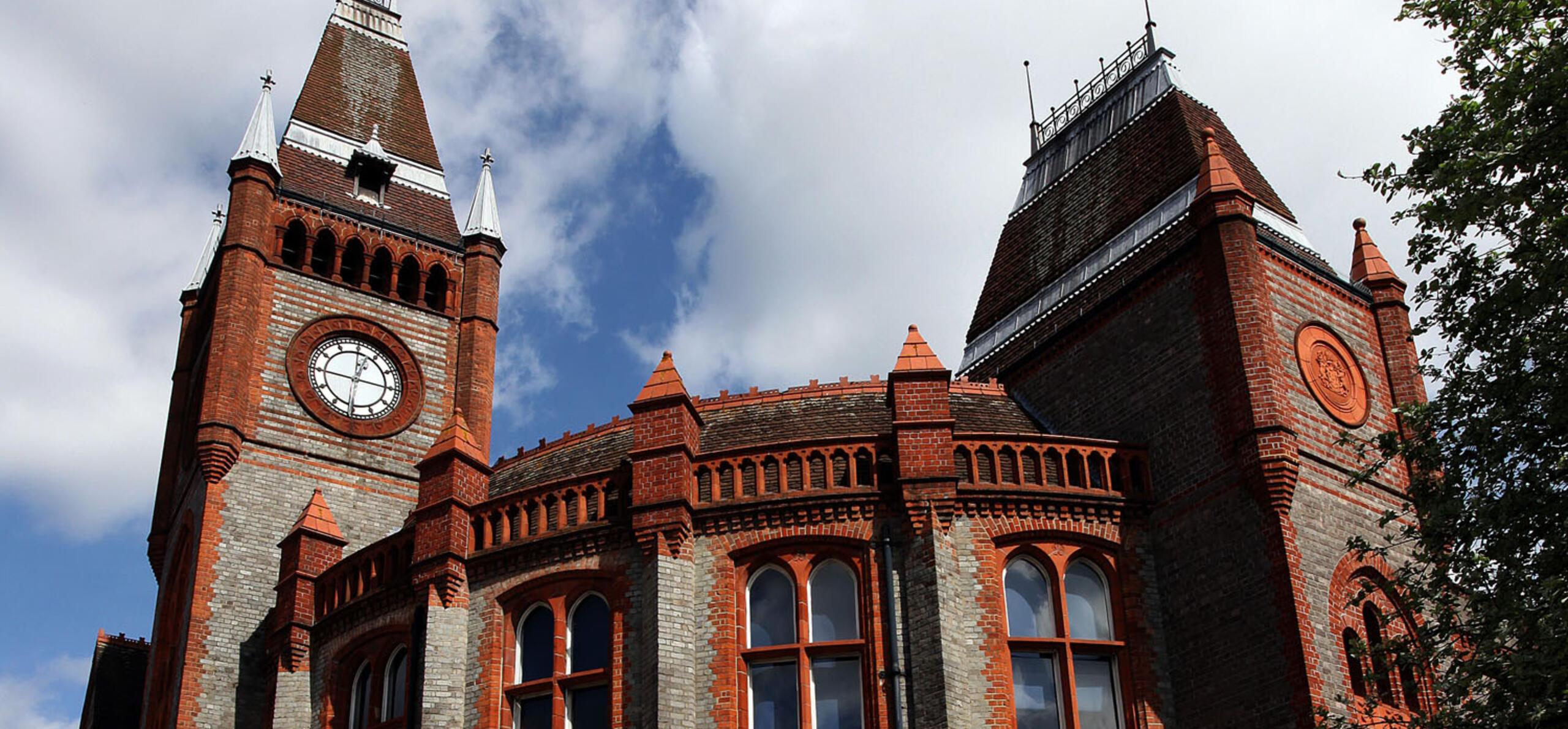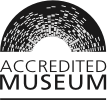St Laurence’s Church stands beside the Town Hall. During the middle ages it was used by townspeople from the surrounding parish and residents of an alms house just inside the abbey grounds. The main gateway to the abbey stood to the right of St Laurence’s. It was called the Compter Gate. Find out more about the history of the abbey at Reading Museum inside the Town Hall, which was designed by Alfred Waterhouse and completed in 1875.
Digging Deeper - Sanctuary at St Laurence's
Medieval law said criminals could avoid the death penalty by ‘claiming sanctuary’: that is going into a church and asking the priest to call a coroner (a legal official). After confessing their crimes to the coroner they had to swear to go abroad as quickly as possible, and stay there. In 1241 Richard le Vacher and John Dobyn killed a woman called Matilda la Daye and came to St Laurence's church for sanctuary. When John Dobyn left the church to head for the nearest port he found a mob led by Matilda’s daughters waiting for him. He was seized and taken to Charlton where a local court tried him and had him hanged. Find out more about life in medieval Reading at Reading Museum inside the Town Hall.
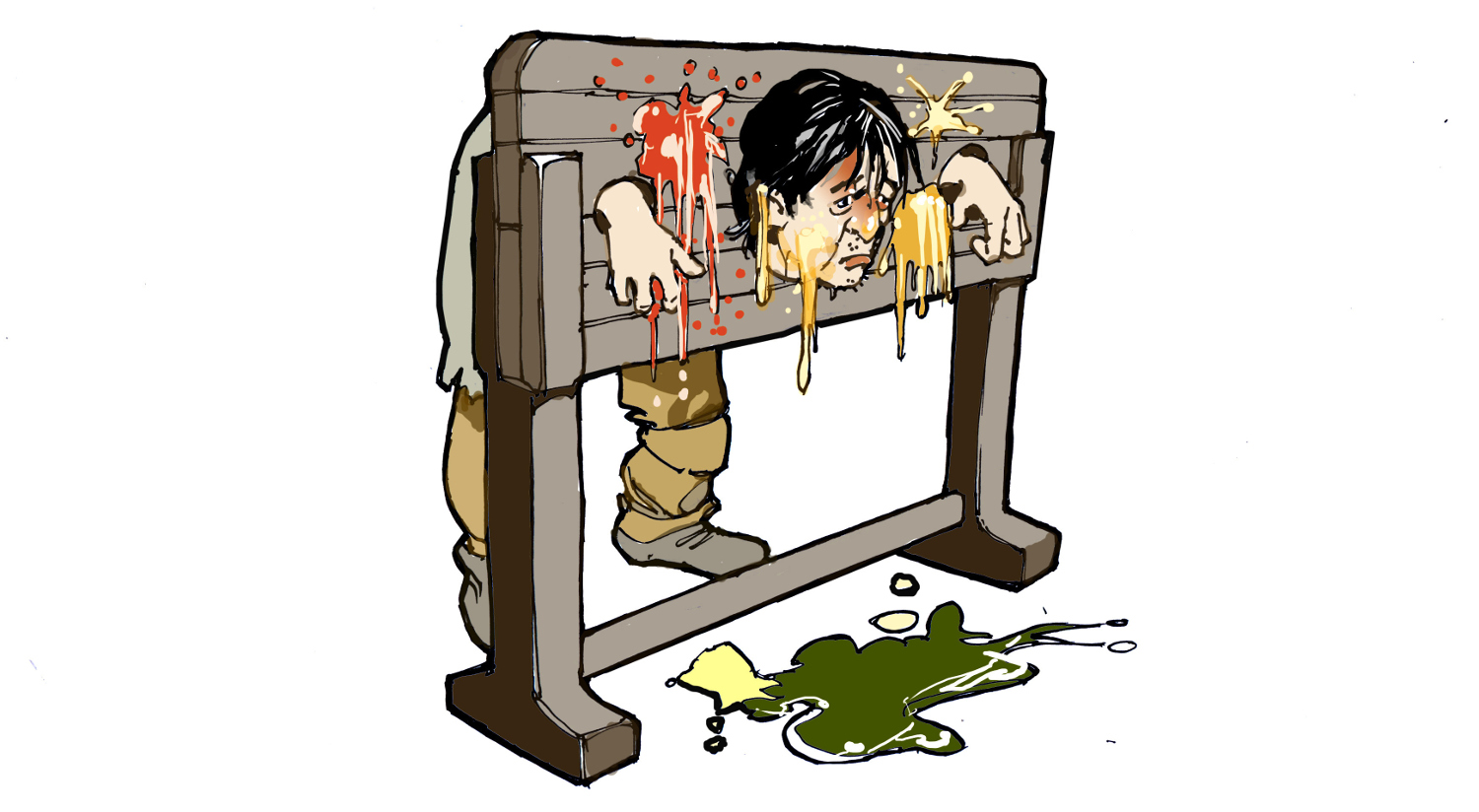
Stocks were a common medieval punishment. Reading's were kept in the Market Place
Borough coat of arms
Reading’s coat of arms developed from a 14th–century seal of Reading which showed a king’s head between four uncrowned heads, probably representing the burgesses of the town's guild. A small stone angel on the outside of St Laurence’s holds this seal.
In 1566 Elizabeth I granted Reading’s first coat of arms adapted from the seal to feature a Queen’s head surrounded by four maidens. The letters R.E. also appeared. These either stand for the first two letters of the town’s name or for Regina Elizabeth in honour of Elizabeth I. These letters no longer appeared after 1623.
The town’s current coat of arms has a shield with the Queen and four maidens, supported by two white rams with golden horns and hooves. The rams represent the early wool trade of Reading. The crest is an abbot’s mitre which commemorates the once great Reading Abbey. A Deo et Regina, the motto, means ‘from God and the Queen’. The initials R. E. were reinstated to honour Elizabeth II on her coronation in 1953. You can see this coat of arms on the outside of the smaller of the Town Hall's towers that was restored in the 1980s.
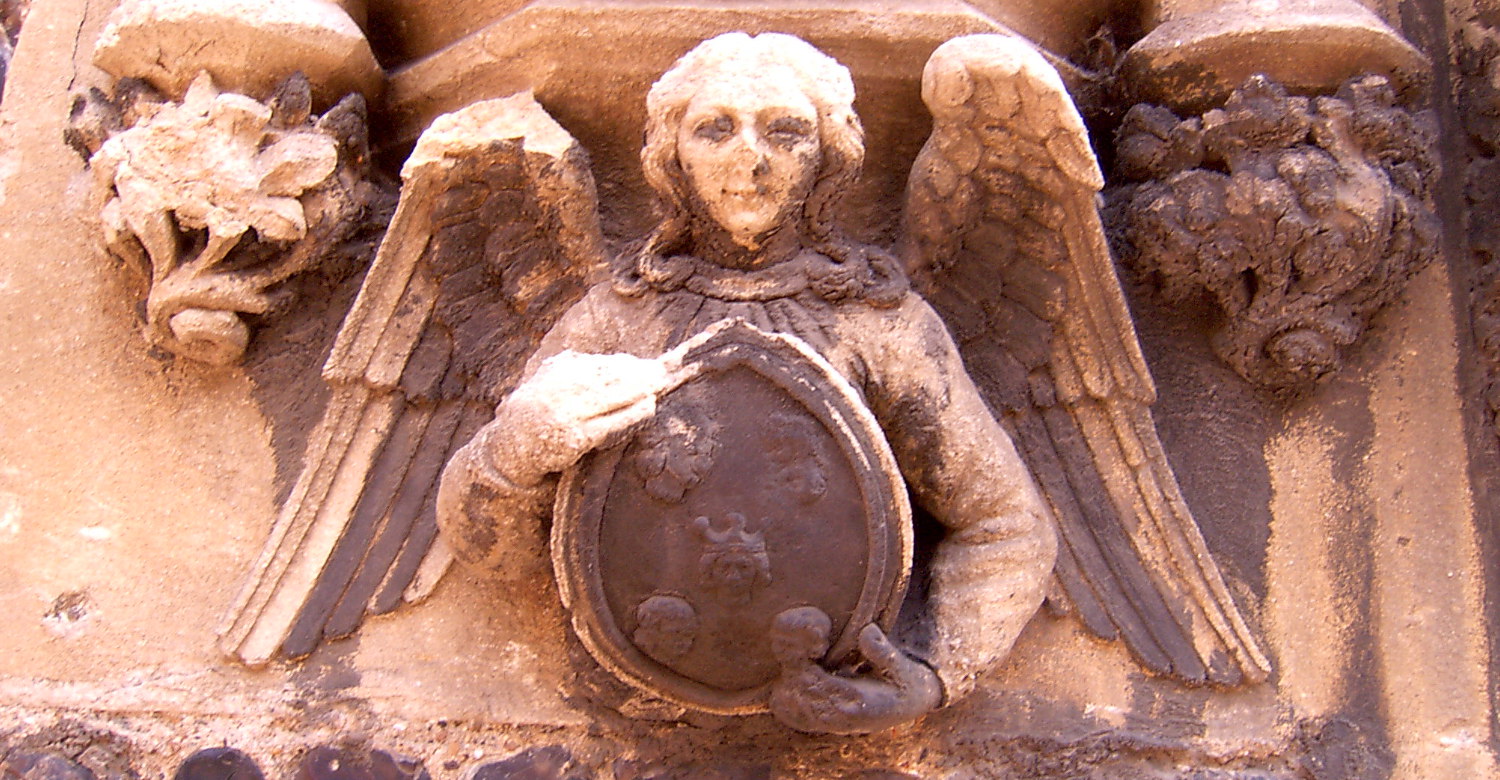
This angel beside the west door of St Laurence's church holds the oldest form of Reading's seal
1943 air raid
At tea-time on Wednesday 10 February 1943, a single Dornier bomber dropped four bombs across the centre of Reading. One demolished the building in Friar Street housing the popular British Restaurant, the People’s Pantry, killing 29 of the 41 people who perished that day. Had it not been Wednesday, an early closing day, then casualties would have been even worse. St Laurence's church, Blandy and Blandy’s and the Town Hall were all badly damaged by the impact of the fourth and final bomb to be dropped that day, and you can still see shrapnel marks on St Laurence’s church tower. Find out more about the air raid on Reading Museum's blog.
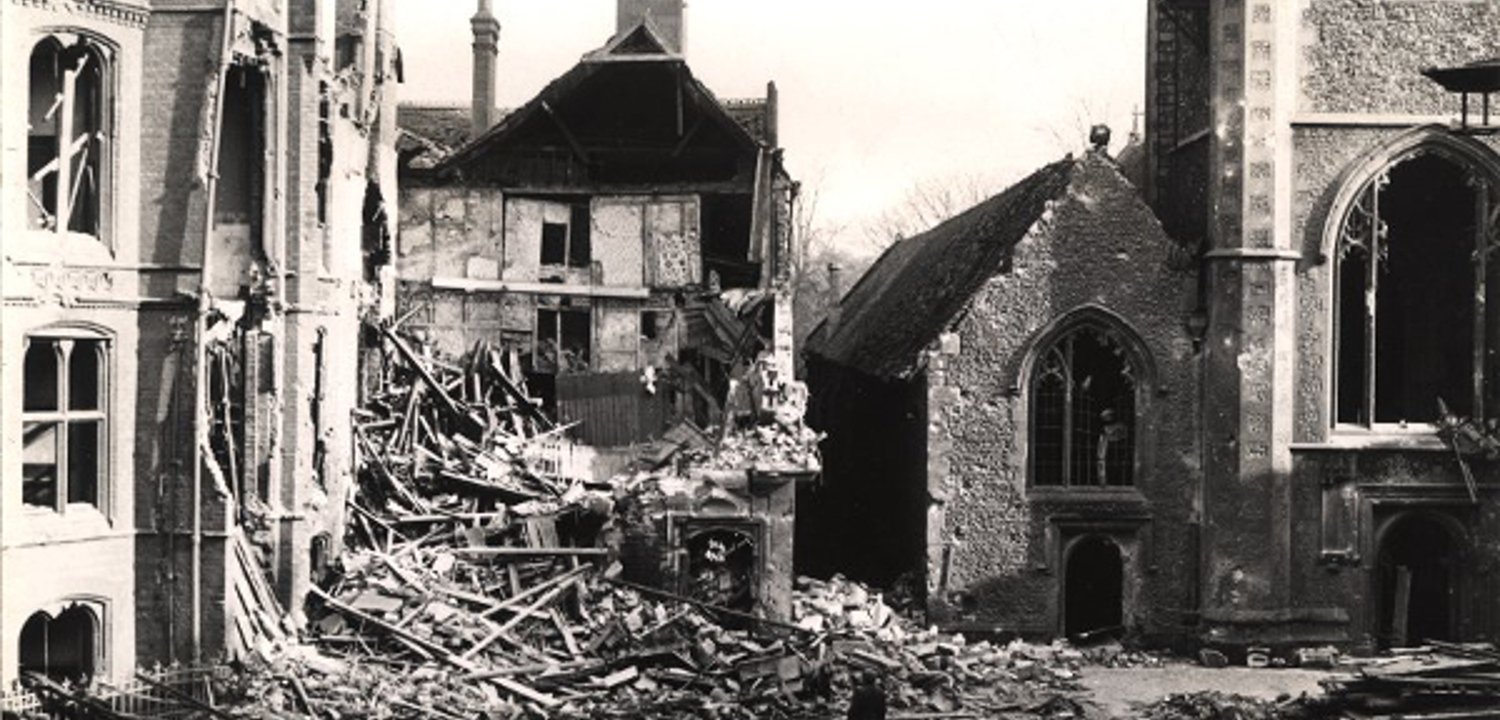
The Town Hall, Blandy and Blandy’s offices and St Laurence's church were all badly damaged by the air raid on 10 February 1943
